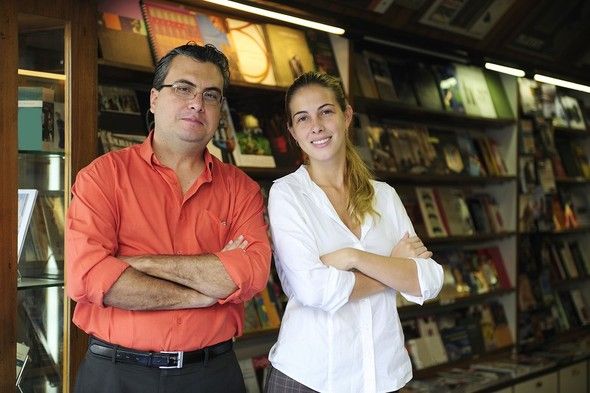The most recent report from the National Federation of Independent Businesses (NFIB) paints a clear picture of the state of small business in the United States.
The report indicates that small business owners have a positive outlook on the nation’s economy and their future. Exploring the state of American small business also reveals interesting data about the correlation between increased hiring and successful financing.
Scope of Small Business in the United States
According to the U.S. Small Business Administration’s latest data, there are 30.2 million small businesses in the nation, representing 99.9 percent of all American businesses.
Those businesses employ 58.9 million people or 47.5 percent of all U.S. workers.
Firms with fewer than 100 employees make up the largest share of small business employment, while those with fewer than 20 employees saw the largest gains in employees, adding 1.1 million jobs.
The top five industries employing people at small businesses were:
- Health care and social assistance (8.7 million employees)
- Accommodation and food services (8 million)
- Retail trade (5.5 million)
- Manufacturing (5.2 million)
- Professional, scientific, and technical services (5.1 million)
Small Business Owners’ Economic Outlook
The NFIB data show a promising, optimistic outlook on the U.S. economy.
In July 2019, the NFIB Small Business Optimism Index rose 1.4 points to 104.7. Small business owners are bullish on several key areas:
- Looking for new employees (39 percent)
- Planning to make capital outlays (27 percent)
- Believing it’s a good time to expand (26 percent)
- Expecting an increase in real sales (22 percent)
- Planning to increase employment (21 percent)
- Optimistic about economy improvement (20 percent)
“This is confirmation that small business owners remain very optimistic about the economy despite all the talk about ‘slowing,’” notes the NFIB report analyzing the survey findings.
Heightened expectations for economic improvement and anticipated increases in real sales drove the increase in the Optimism Index.
A closer look at the NFIB data shows that labor is one area where small businesses are struggling. A record high of 26 percent of survey respondents noted that finding qualified workers was their number-one problem. Sixty-three percent of companies were hiring or trying to hire with 89 percent of such companies finding few to no qualified applicants to fill necessary positions.
The number of companies reducing employment remained flat (7 percent). The number of businesses increasing their worker base also dropped slightly by two points to 10 percent. The inadequate supply of workers related to the record-level demand could signal a slowdown in economic growth, notes the NFIB.
A look at key economic indicators in mid-2019 backs up the favorable notion on economic growth.
- The gross domestic product (GDP) growth rate is projected to slow but remain steady, with the Fed forecasting the following increases:
- 1 percent (2019)
- 2 percent (2020)
- 8 percent (2021)
- Unemployment rates are expected to climb slightly:
- 6 percent (2019)
- 7 percent (2020)
- 8 percent (2021)
- The core inflation rate is expected to increase nominally:
- 5 percent (2019)
- 9 percent (2020)
- 0 percent (2021)
The Fed lowered its interest rate to 2.25 percent in mid-2019 and hinted it may lower rates again in 2019.
Business Owner Confidence in the Future of their Companies
The growth in capital spending reflects a positive outlook by business owners regarding their own companies. Of the 57 percent reporting capital spending, 41 percent noted buying additional equipment, 25 percent bought new vehicles and 16 percent spent money on improving or expanding facilities. Twelve percent bought new fixtures or furniture and 6 percent acquired new land or buildings. All areas were level or a gain over the previous reporting period.
While the capital spending seems to be in a turnaround, it is still low historically. The NFIB notes that “resumption of the tariff wars may raise uncertainty again though in the coming months. Owners are more reluctant to make major spending commitments when the future becomes less certain.”
There is a high degree of optimism in the outlook for their own company’s financial performance, too. More than two-thirds of small business owners surveyed in a separate poll are expecting an increase in revenue for 2019, with only 1 in 10 anticipating a revenue decrease. Another 23 percent expected no change in revenue growth.
Financing Business Needs
The NFIB data paints a positive picture for small businesses seeking funding:
- 56 percent said they were not interested in a loan
- 29 percent reported borrowing on a regular basis
- 28 percent reported all their credit needs were satisfied
- Just 3 percent reported that all borrowing needs were not satisfied, a historically very low percentage
- 2 percent indicated their most recent loan was more difficult to obtain than the previous one, a near-record low
- Only 8 percent of owners were paying a higher loan rate on their newest loan than a previous one
- The average interest rate fell by 40 basis points on short maturity loans
“Credit conditions are about as supportive as they have ever been in the 46-year survey history,” the NFIB noted.
That outlook is similar to that collected by the 12 Federal Reserve banks in the 2019 Small Business Credit Survey released earlier in 2019 and based on late 2018 data. That report found the following:
- The demand for new financing was consistent, comparing 2018 to 2017, with 43 percent applying for new capital compared to 40 percent the previous year.
- Almost half of the loan applicants (47 percent) received the full amount of funding they sought, similar to results from the 2017 survey. Among those that did not apply for funding, about half said they had sufficient financing, while others were debt-averse or were discouraged.
- Shortfalls in funding were among companies with typical characteristics, including:
- Weak credit histories
- Lack of profitability
- Lack of long tenure in the business
- Urban business location
- Gaps in funding were most acute in companies seeking $100,000 to $250,000.
- Online lending is on the rise:
- 32 percent of loan applicants used online lenders in 2018, up from 24 percent the previous year and 19 percent in 2016.
- Medium- and high-risk applicants (based on creditworthiness) were nearly as likely to apply to an online loan provider (54 percent) as a large bank (50 percent). Said applicants were more likely to apply to an online lender than a smaller bank (41 percent), credit union (12 percent) or community development financial institution (5 percent).
- The growth happened despite lower rates of applicant satisfaction with online lenders versus banks (large and small).
- The Fed survey showed additional insights that back up the bullish impression small business owners have about the economy:
- More small businesses indicated revenue growth (35 percent, up from 28 percent) in 2018 compared to 2017.
- Employment growth rose (23 percent, up from 19 percent) in the same timeframe.
- 72 percent of firms were optimistic about revenue growth in 2019, the same level as a year previously.
- A large majority of firms – 73 percent – indicated that input costs had increased in the previous 12 months. Among those companies:
- More than half raised prices.
- Companies that raised prices were twice as likely to experience profitability growth as firms that did not pass on the increases in input costs.
- More than a third added payroll employees in the previous year.
- More than one-third of firms reported adding payroll employees in the prior 12 months, most commonly at the following:
- Startups
- Businesses with more than $1 million in annual revenue
- Companies with five or more employees
- Firms with decision-makers younger than 46
- 44 percent of companies expected employment growth in 2019, down slightly from the 49 percent anticipating growth in 2018.
- How much can a small business expect to obtain in lending? The average loan amounts for small businesses, according to a recent article, indicates the following averages:
- $633,000 (overall loan)
- $417,000 (SBA 7(a) loan)
- $13,000 (SBA microloan)
- $110,000 (term loan)
- $20,000 (short-term loan)
- Average small business loans by financial institution included:
- $593,000 (large national banks)
- $146,000 (regional banks)
- $50,000 to $80,000 (alternative lenders)
Supporting Small Business
Benetrends is a firm believer in small businesses and the role they play in the U.S. economy. For those struggling with securing business funding through traditional sources, Benetrends offers another option: The Rollover as Business Start-Ups (ROBS) strategy.
The ROBS approach allows you to use your existing 401(k) or IRA funds to finance a business, start-up, or expansion costs. With Benetrends’ pioneering expertise in small business funding, you can access your needed capital quickly without tax or early-withdrawal penalties.
Benetrends also helps small businesses secure SBA loans with a team of professionals to walk you through the application process and help match your business with lenders eager to work with you. Benetrends provides business services, too, including retirement fund management, credit card processing, legal services, and business insurance. To learn more, download Innovative Funding Strategies For Entrepreneurs.

